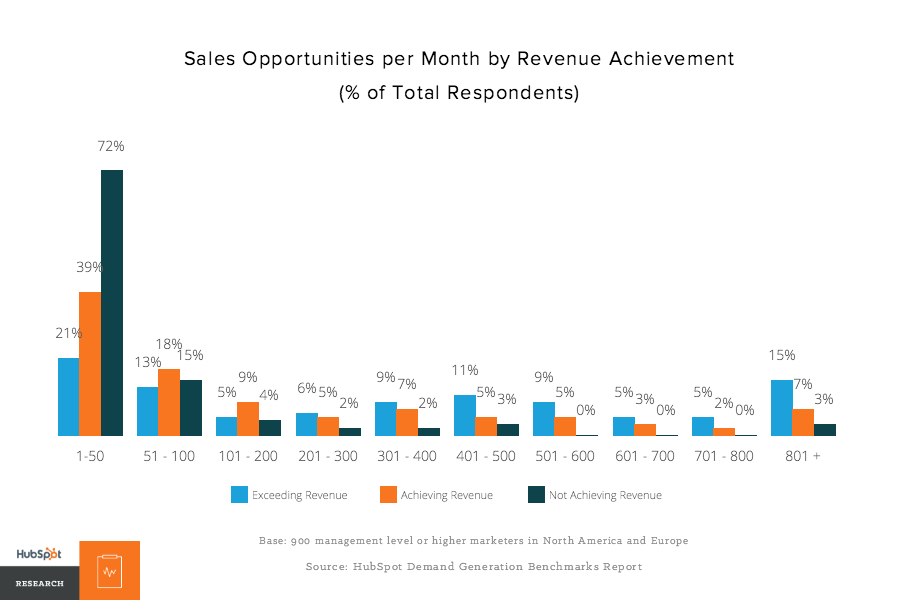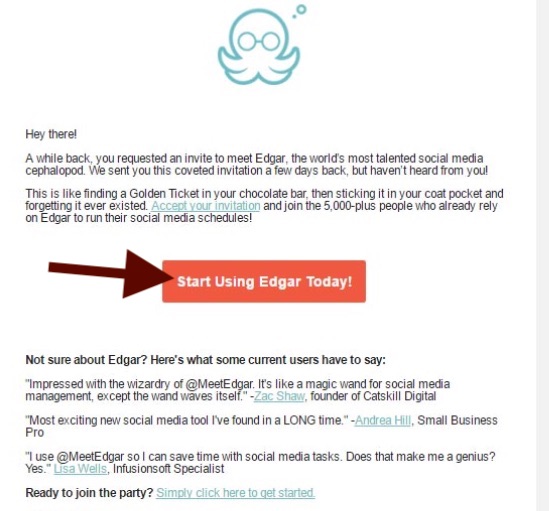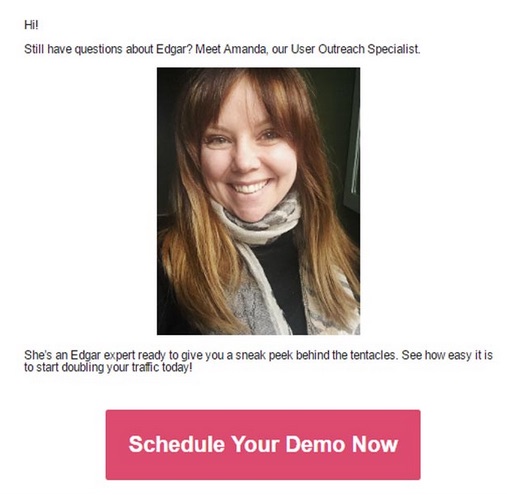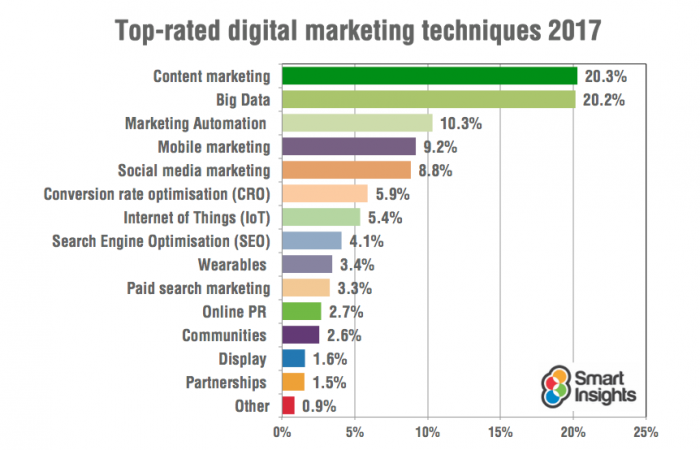Working on your sales engagement is crucial, otherwise, you will be left with prospecting and get little to no results in return.
HubSpot Research found 72% of companies with less than 50 new opportunities per month didn’t achieve their revenue goals, compared to 15% with 51 to 100 new opportunities and just 4% for companies with 101 to 200 new opportunities.
This leads to an important question – are you doing something wrong that is leading to low sales engagement?
Or maybe you are not using the right practices?
If you are not getting desired results, then the problem is probably a mix of both the questions.
Although Sales Engagement seems to be a very small aspect of the sales process, it is very critical to establish that early trust with the prospect.
Let us look at the five best practices for Sales Engagement:
1. Researching Prospect Personality
As a sales professional, it’s important to stay on top of what’s going on with your prospect. What problems do they have? And how can you solve them?
The way to go about it is by understanding the customer mindset and approach them with an approach that aligns best with their goals.
Researching your prospect will help you strike a conversation with your prospect, rather than just sending a cold pitch.
Have a look at this video to understand how to research a prospect before contacting them.
https://www.youtube.com/watch?v=w0qbIm4YtjU
Consider these main key points while researching a prospect:
- Does your prospect have a target customer base?
- Make sure that your prospect needs your product or you can solve their problem
- Before the initial sales pitch, research the domain of the organization along with things like the number of employees, structure and any recent news
- Plus, analyze the revenue and the previous payment routine of the organization.
The main goal is to start the sales conversation on the right note.
You must not come across as a novice, because people are generally wary of dealing with someone who isn’t well informed.
Moreover, today when prospects are active on social media channels it’s easy to get a broad sense of their personality based on their LinkedIn engagement, Tweets and other social media activity.
Apart from this, there are many sales prospecting tools that can make the prospect-researching task considerably easier.
2. Build an Accessible Content Repository
In the previous point, we talked about how important it is to research the prospect in order to better your sales engagement.
But what do you do with the data after you send the sales pitch? Discard it?
If this is how you go about it then you are going wrong.
Come to think of it, what are the chances that you will require this data in the future? What if you witness a similar situation again?
Most of the sales teams complain about not having the right content/collateral to share with their prospects. On the other hand, there are teams where the content is available but is just not accessible.
The sole reason behind this is the tendency to discard the previously collected information and data.
Thus, the companies need to invest in building a repository of sales targeted marketing content to ensure that it is accessible to every sales representative.
According to a report, 47% of buyers viewed three to five pieces of content before engaging with a sales rep.
This figure clearly tells that one has to read a couple of pieces of research content before engaging with a sales representative.
The best way is to organize marketing content around the use cases or problems that the product addresses so that the rep can quickly respond to prospect’s queries and come out as more informed. Build content for every stage of the sales process and every kind of customer.
3. Follow up with prospects
For most sales professionals, following up after the sales pitch is such a hassle.
But following up after a sales pitch is highly important for more than a few reasons, including bettering your sales engagement.
The selling journey doesn’t get concluded overnight. The final sale can take days or even months.
Now to make sure that your prospect doesn’t get tempted by your contemporaries in the market, you have to follow-up promptly and regularly.
Have a look at this perfect follow-up email example by “MeetEdgar”.
What are the main points that make this follow-up email perfect?
- A noticeable and engaging CTA
- They have added the testimonials very smoothly without sounding salesy
- The narrative of “finding a golden ticket in your chocolate bar” is very engaging.
And this follow-up tactic doesn’t end here.
The company didn’t get disheartened on not getting a response after the first follow-up. They tried a different approach this time.
This approach is more human and focuses on the person, who will lend their expertise.
Having a well-defined follow-up process is a challenge.
Although this falls under Sales Enablement, follow-ups are an intrinsic part of Sales Engagement. Often, a sales representatives follow-up is based on their gut and do not follow a well-defined process. Here is where Sales Enablement comes in and having a Sales Acceleration tool really helps. It enables representatives with tasks and reminders to ensures no follow-up is missed.
4. Building a Sales Readiness Process:
Ideally, every Sales manager wants his representatives to be in touch with a qualified prospect all the time. But it is an ideal scenario where in real life, every sales rep has his time divided across the activities of selling, prospecting, taking a break or breaks, training and even updating CRM.
The point is that you want your sales rep to be at their best when it is selling time. And for the rep to reach their max potential, you want them to utilise their time more in one of the key areas which are training.
There are a lot of pointers on training but here are some topics you really need to focus on:-
- In-depth quarterly training on product positioning and pitches against the competition.
- Agile training sessions with changing market dynamics
- Two-way sync between training collaterals and feedback from customer-facing sales reps.
- Feedback on sales pitches with senior sales closers.
According to Xerox, 87% of sales training content is forgotten within one month of the training.
With this being said, you need to ensure that it is a continuous process and not a one-time job.
5. Intermix Sales and Marketing
Now when one talks about intermixing sales and marketing, most people mistake it for aligning both the teams. However, beyond that, intermixing of sales and marketing data is required.
One needs to combine the data sets of both the avenues in the company to come to a final conclusion.
According to 20% of marketers, Big Data is the most important marketing technique.
And we have actually discussed previously (in the first and second point) how important data and research is in order to better your sales engagement.
Armed with relevant and genuine data, you will be able to develop solutions and interact with your prospect with fewer inhibitions and a whole lot of confidence.
Thus, make sure that the common data is transparent for the sales as well as the marketing team.
Without the two functions working in sync, there is a huge probability of an expectation mismatch between the prospect and the sales rep. And trust me you don’t want that.
Conclusion
These are some of the key details and practices that will help you better your Sales Engagement. Unfortunately, most of these practices are often overlooked by management as the focus is always on vanity sales metrics and numbers.
That said, if you follow these practices to better your sales engagement, it’s highly likely that you might get an edge over your competitors.
Which practices are you following to better your sales engagement? I would be thrilled to know how you guys do it.
Author: Gaurav Dharmshaktu (@dharmu89)
Gaurav is a Product Marketer by profession and an Inside sales fanatic. He works with InsideSalesBox, an all-in-one inside sales platform helping B2B sales teams strengthen their Sales Enablement process. He is an avid traveller and a casual reader in his spare time.
LinkedIn: https://in.linkedin.com/in/dharmshaktugaurav








